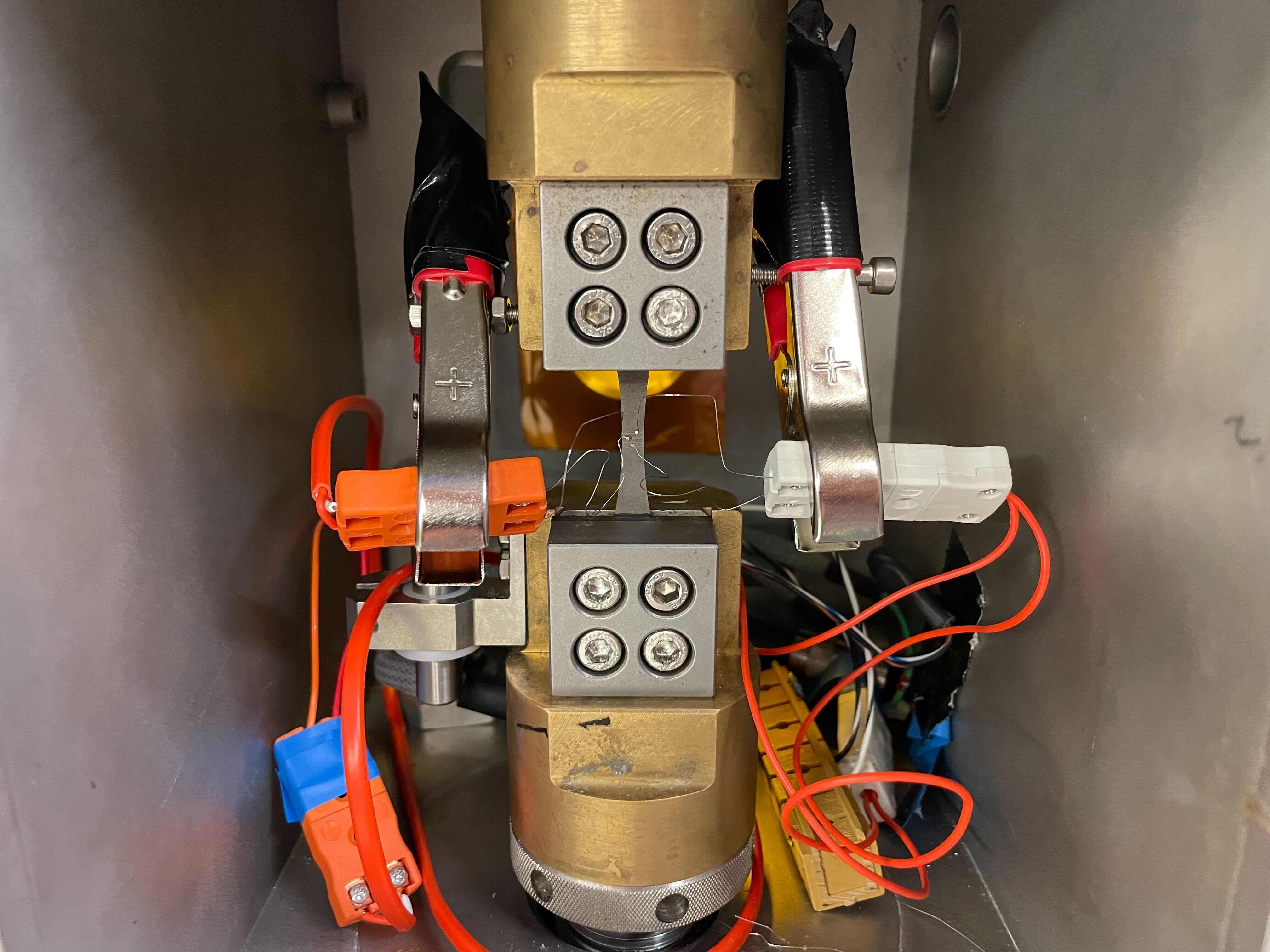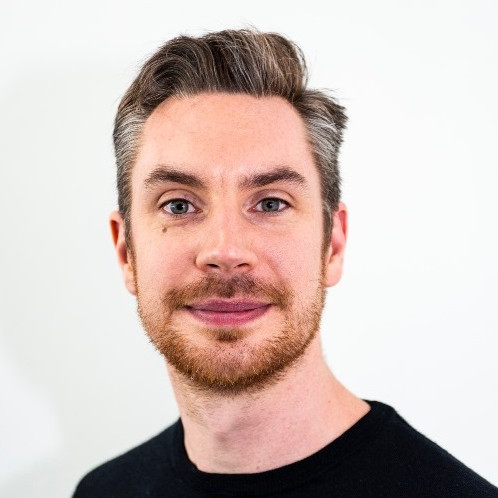



News, Views & Events
News
LightForm Experiments at Diamond (2022)

In the last week of May 2022, LightForm researchers conducted their most recent round of experiments at the diamond beamline in Didcot. These experiments were supervised by LightForm post-doctoral researcher Dr Christopher Daniel, aided by PhD students Xiaohan Zeng and Guy Bowker, all from the University of Manchester.

Diamond's high-energy X-ray Synchrotron source was used in conjunction with the University of Manchester's electro-thermo-mechanical testing machine to acquire X-ray diffraction patterns of Ti-6-4 while simultaneously measuring stress, strain and temperature. The team also made use of the new fast-acquisition Pilatus detector, able to capture up to 250 frames per second, allowing measurements to be taken at high strain rate.

The first set of experiments consisted of in-situ X-ray diffraction hot tensile tests of Ti-6-4 samples, which were repeated for various temperatures and strain rates. Following this, in-situ X-ray diffraction was used to measure texture development during room temperature low strain rate tensile tests of Ti-6-4 samples, cut from rolled sheet at 0, 45, and 90 degrees. With the diffraction patterns from the new detector, the team will be able to determine changes in crystallographic texture and d-spacing within the material during hot and cold working temperatures, and use this to validate crystal plasticity models.
Next, Ti-6-4 samples were heated without deformation to measure volume fractions of the hexagonal close-packed and body-centred cubic phases via the diffraction patterns. This allowed for determination of beta-approach curves, which may be used to inform crystal plasticity and phase-field models.

Finally, three large samples, each consisting of 30 small sections of Ti-6-4, were stage-scanned at room temperature using the X-ray beam to better measure the beta texture. Usually, measurements of beta texture in Ti-6-4 at room temperature are unreliable using EBSD, with only very small amounts of beta present difficult to index. With the X-ray beam, the team was able to directly, and more reliably, measure texture of the beta present at room temperature.

As experiment time at a beamline is valuable, visiting scientists must work long hours to make the most of their allocated time, running experiments and collecting data throughout the day and late into the night, often working in shifts. Our team was able to get a good night’s sleep and not need to take shifts, thanks to setting up stage-scan samples to run overnight.
Overall, the trip was successful. In total, 41 experiments were completed. For now, the LIGHTFORM team continues to analyse the large amount of data collected, and looks forward to sharing the results and data obtained, in addition to updates regarding future experiment proposals soon.
Written by Guy Bowker



